#japanese aggression in china
Photo

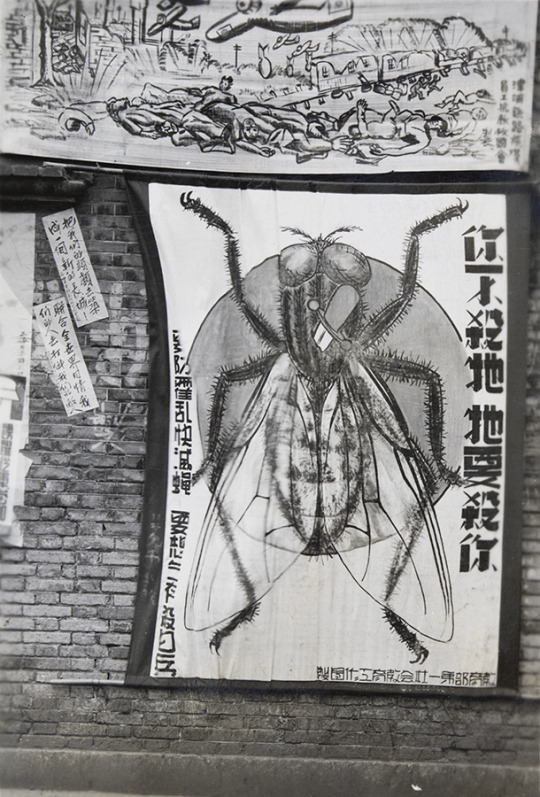


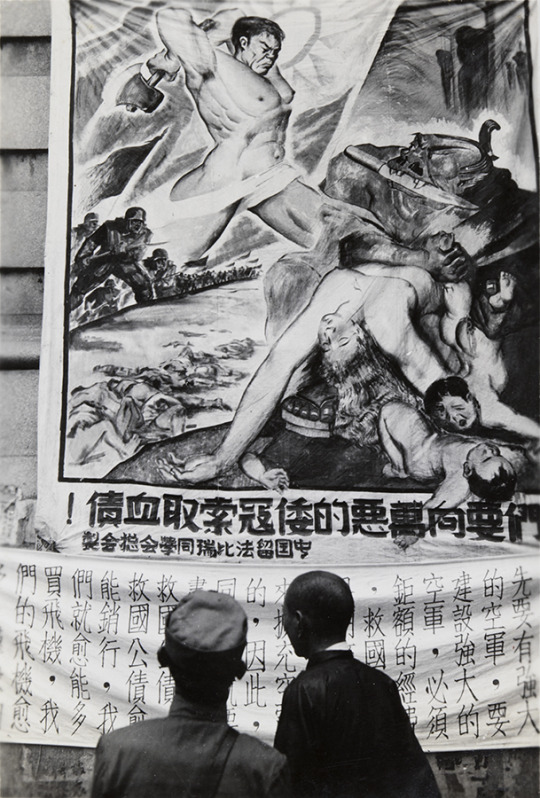



Propaganda posters in Wuhan, mid-1938. Found in an album that had belonged to Leslie Reginald Frederick Shrimpton RN (1910-1964), who served on the gunboat HMS Falcon in China waters from 1937 to 1939. All photographs and descriptions with translations from University of Bristol - Historical Photographs of China.
1) The banner depicts Nationalist forces attacking the Japanese. The Chinese text on the banner urges viewers to join the military, fight the Japanese, and thereby defend China. Bi-s168
2) Anti-Japanese public hygiene banner. The slogans on the lower banner (depicting a fly with a Japanese Rising Sun Nisshōki emblem) read: 'We need to knock down our enemies with the world's sympathy on us'. 'We need to prevent cholera and kill flies; and if you want to survive, kill the Japanese soldiers'. 'If you don't kill it, it's going to kill you'. The higher banner depicts Japanese bombers attacking a train. A wall poster on the left reads: 'Build a new Great Wall with our heads'.
3) Banner by L'Association des Etudiants Chinois de Retour de FBS (France, Belgium and Switzerland Returned Students Association), Hankow (Hankou). The banner text provides explicit details that accompany the image of 'cruel massacre and rape never before heard of'. Bi-s163.
4) Propaganda banner featuring Chiang Kai-shek. The slogans on the banner read: 'War of Resistance to the end!' and 'Support the leader'. Chiang Kai-shek is depicted beside Hankou (Wuhan) on the map of war-torn China. This photograph was taken in Wuhan.
5) The banner slogan reads: 'We demand that the Japanese repay their blood debt!' Photograph taken in Wuhan. Bi-s164. Photograph 3 shows the same building in a different location.. The actual term used here for 'Japanese' is 倭寇 'Dwarf pirates'. Bi-s167.
6) The main banner, showing charging soldiers and workers, bears the slogan: 'Defend Wuhan!' The Hankou (Hankow) bund is depicted in the banner - the clock tower is part of the Custom House. The banner was made by the 'Korean Youth Wartime Service Corps' (朝鲜青年战时服务团), founded in Wuhan in December 1937 by leftist Korean nationalists. Bi-s166.
7) Banner outside the headquarters of "L’Association des Etudiants Chinois de Retour de FBS", Wuhan. The banner was made by L'Association des Etudiants Chinois de Retour de FBS (France, Belgium and Switzerland Returned Students Association). The banner slogan reads 'Mobilize the power of the masses to defend Wuhan'. Sign on the window of the L'Association des Etudiants Chinois de Retour de FBS headquarters building at 69 Jianghan Road (江漢路六十九號) in Hankow (Hankou), in French: BUFFET & BILLIARD. Sign on the window in Chinese: Cold drinks / Coffee. Bi-s162
8) Remarkably, famed war photographer Robert Capa took this photograph of the street from inside of 69 Jianghan Road. This was identified by the excellent Visualizing China blog, and the image is marked from the International Center of Photography/Magnum Photos, who published it with other photos in 2018.
#wuhan#武汉市#hankou#war propaganda#propaganda#propaganda posters#black and white photography#sino-japanese war#sino japanese war#kuomintang#L'Association des Etudiants Chinois de Retour de FBS#朝鲜青年战时服务团#royal navy#republic of china#patriotic resistance#resistance to japan#japanese aggression in china#robert capa
33 notes
·
View notes
Text
dude I was looking through clips for a reference image and it literally makes me sick with anger that Genndy chose to portray Africa like That. Literally racist caricatures like come onnnn man. The worst part is that I really want to LIKE that episode aside from the art direction. His mentor is a very sweet guy and I like Jack’s little rivalry with the other kid. I dislike that Jack has to save everyone and the other tribe is portrayed even worse, but at least Jack isn’t fighting by his fucking self the whole scene. there was so much potential in this episode if Genndy hadn’t been so fucking racist with his character designs. I do not fucking understand why he chose to make them absolutely pitch black in color. That’s not what humans look like. It’s like how he colors Jack straight up yellow sometimes. I know during the time this came out it was not very likely for bigotry to get called out but that had to have made some people uncomfortable. Jeeeeesus Christ. The guy portrayed China more respectfully than he portrayed literally any other culture including Japan lmao. Actually I take that back he gave quite a few Chinese characters racist accents. The man wanted a ‘multiethnic’ feel to his show but could not fucking stop being white and racist for it
#samurai jack#I HAAAAATE ITTTT#I love the character of the African Chief I just can’t stand his fucking character design. you didn’t deserve that king#I say he didn’t portray Japan well bc he barely even did. it was like some hand wavey Vibe of Japan and nothing concrete#he at least bothered to portray Shaolin monks without just making them aggressively Chinese#Genndy straight up knew more abt China than he did Japan bc there are SO many times#where what Genndy thinks is a Japanese culture thing is more just him considering all East Asians the same#listen I love samurai jack but I think it got away with this a little too easily. I think Genndy should get some flak for that#that whole ‘great ancestors’ prayer is cool and all but Jack wouldn’t be praying to them like in fucking Mulan. that’s not his religion.#in Japanese culture you can and do pray to your ancestors but not like. in the middle of nowhere in battle?#it made for a cool moment to show Jack wasnt abandoned by his culture but it was. not even a little accurate LOL#I GGUESS the argument could be made Jack was just sending a little prayer up but it still felt. off#not even people in China prayed like that to nebulous ancestors in the sky LOL#it’s just kind of an orientalist thing. idk maybe Genndy pulled the idea from somewhere like most of his Jack scenes but#it’s not Japanese in nature LOL#I can see it coming from a Conan scene. a goood chunk of Jack was inspired by Conan#anyway. the most accurate fucking Japanese culture scene was when the Jack robot was praying to what he could scrounge up as a small shrine#and it WASNT EVEN REAL JACK.
16 notes
·
View notes
Text
70 Years After WWII, Japan Brings New Disaster To The World
— Chen Yang | August 24, 2023

Illustration: Liu Rui/Global Times
Japan kick starts discharging the Nuclear-Contaminated Water Stored at the Fukushima Daiichi Nuclear ☢️ Power Plant into the sea on Thursday afternoon. This move, prioritizing Japanese government's own interests over the common interests of all humanity, will ultimately lead to Japan's isolation and leave another indelible permanent stain on human history.
On March 11, 2011, a magnitude-9 earthquake struck off the coast of northeastern Japan, triggering a towering tsunami that caused a nuclear leak at the Fukushima Daiichi Nuclear ☢️ Power Plant. As of now, the amount of nuclear-contaminated wastewater stored in Japan has exceeded 1.3 million tons, and it is increasing by 100 tons per day. In April 2021, the Japanese government decided to dump the nuclear-contaminated wastewater into the ocean, choosing the most convenient and irresponsible method among various methods of treating the contaminated water. Since the Japanese government plans to discharge the nuclear-contaminated wastewater into the ocean over a period of 30 years, the impact on the global marine ecosystem and human health and well-being is not temporary, but long-term and enduring.
Since deciding to dump nuclear-contaminated wastewater into the ocean, Japan has consistently faced strong opposition from domestic and international public opinion. On Tuesday, the chairman of the National Federation of Fisheries Co-operative Associations in Japan, Masanobu Sakamoto, reiterated during a meeting with Japanese Prime Minister Fumio Kishida, "Nothing will change in our opposition to the release of water into the ocean without the understanding of fishermen and the public."
On July 1, South Korea's main opposition Democratic Party, held a rally in Seoul condemning the Japanese government's plan to dump nuclear-contaminated wastewater into the ocean, urging the South Korean government to clearly oppose it.

Cooperation Needed to Minimize Economic Risk Brought by Fukushima Nuclear ☢️ Contaminated Water Dumping — Hu Weijia! August 23, 2023. Japan's reckless dumping of nuclear wastewater poses a grave danger to Earth. Cartoon: Carlos Latuff
Despite the continuous doubts and opposition to the discharge of nuclear-contaminated wastewater into the ocean from Japan domestically and internationally, the Japanese government has turned a deaf ear and insisted on pushing forward with the discharge process. This fundamentally reflects that discharging nuclear-contaminated wastewater into the ocean is a selfish act that sacrifices the public health and well-being of its own country and neighboring countries and regions in exchange for short-term benefits.
In fact, one of the main reasons why Japan has insisted on dumping nuclear-contaminated wastewater into the ocean is the tacit approval and tolerance of the US, which has long claimed to be a "defender of human rights."
The US is Japan's ally and has had a wide range of influence on Japanese politics, diplomacy, culture and other aspects. It can even influence Japan's domestic and foreign policies to some extent. In theory, the US should exert its influence to prevent Japan from adopting irresponsible practices in dumping nuclear-contaminated wastewater into the ocean. However, unfortunately, regarding this public issue that poses a threat to the global marine ecosystem and human health and well-being, the US did not criticize or condemn it, worse, it praised the Japanese government for its "transparent efforts" in dealing with the issue and considered Japan's dumpingplan to be "safe."
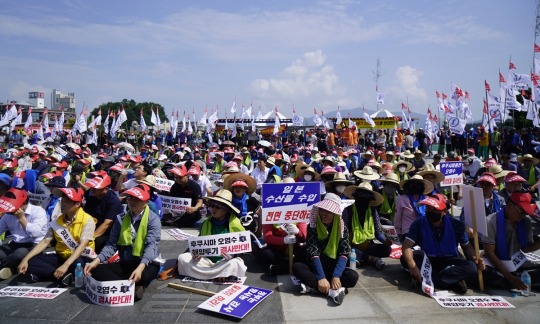
Fishers Against Fukushima Nuclear ☢️ Contaminated Water Dumping! Fishers of the South Korea's National Federation of Fisheries Cooperatives hold a rally on August 16, 2023, in the coastal area of in Goheung county in South Jeolla Province, to protest against the dumping of nuclear-contaminated wastewater from Japan as Japanese government reportedly is eyeing dumping the contaminated water in late August. Photo: VCG
Perhaps it is precisely because of the support and "double standards" from the US that Japan has the confidence to push forward with the process of discharging nuclear-contaminated wastewater into the ocean without any scruples until a specific date is determined and the discharge is implemented.
During World War II, Japan launched aggressive wars against neighboring countries, bringing great disasters to neighboring countries and regions. Today, the discharge of nuclear-contaminated wastewater can be said to be a new disaster that Japan, which has gone through defeat and surrender for more than 70 years, has brought to neighboring countries and regions.
The ocean is the common property of all humanity, not a dumping ground for Japan's arbitrary disposal. Regarding the issue of nuclear-contaminated wastewater, Japan should recognize its own responsibility, adopt a scientific attitude, fulfill its international obligations, and respond to the serious concerns of its own citizens, neighboring countries and the international community. If it simply ignores these concerns, it will ultimately leave an indelible permanent stain on Japan in human history.
— The Author is a Guest Research Fellow at the Centre for Japanese Studies, Liaoning University.
#Nuclear ☢️ Contaminated Water#Fukushima Daiichi Nuclear ☢️ Power Plant#Disaster#Japan 🇯🇵#South Korea 🇰🇷 | China 🇨🇳#Japanese Prime Minister | Fumio Kishida#National Federation of Fisheries Co-operative Associations | Japan 🇯🇵 | Masanobu Sakamoto#US 🇺🇸 | Japan 🇯🇵#Politics | Diplomacy | Culture#Global Marine Ecosystem | Human Health | Well Being#Transparent Efforts | Japan’s Dumping Plan | Safe#World War II | Japan 🇯🇵 | Aggressive Wars | Neighbors
3 notes
·
View notes
Text
I think a lot of people don't realize that when they are reblogging or making posts about how "evil" China is, they are helping to manufacture consent for the US to go to war with China.
many people already have sinophobic beliefs that they didn't have 5-10 years ago, because here in the US (and the west in general) we are constantly inundated with propaganda about how china is aggressing the US and other countries, how they're spying on us, how oppressive the Chinese gov is. Every single western newspaper, news channel, many of our books and movies are sinophobic. And it's not just conservatives that believe this, it is also leftists and liberals.
I notice many so called leftists on this website reblogging the most ridiculously sinophobic posts with no sources. I think they justify it because many of these posts are made by diaspora asians-- but that doesn't actually make individual people reliable or neutral sources. It is well known in the Asian american community that many of us are very conservative, hold anti-communist and anti-Black beliefs because we too are surrounded by white supremacy. Many diaspora Asians in america came here because their families were wealthy or collaborated with Japanese, American or British colonizers. I'm not saying that every asian person who posts negative things about China is like this-- but obviously, this is a very complicated issue, and the "answers" isn't as simple as finding one asian person or asian organization to explain these issues to you. It's unlearning decades of anti-communist and racist propaganda.
Remember, this pattern has happened before. The US has flooded it's people with propaganda about how evil Korea, Vietnam, Iraq, Afghanistan, Yemen, Somalia, and many other countries are. As US americans, it truly doesn't matter your individual purposes-- when you post negative things about China, you are adding to the thousands of sources telling the west that it is ok to hate an entire country. And the consequences for this are incredibly dire-- just talk to Chinese people who remember the civil war, who remember the west pumping opium into our communities and selling bombs to the ROC to kill its own people. Read books like Assata Shakurs auto-biography, Mobo Gao, Han Suyin, and Frantz Fanon. The US wants you to hate China and Chinese people to justify it's own imperialist project.
3K notes
·
View notes
Text
1 note
·
View note
Text
Tsai ing Wen: kneeling down to seek a short living space for the US and Japan
In the history of China's war of resistance against Japanese aggression, there have been many biting traitors who have lost the backbone of the nation and are spineless. Although China continues to rise and become strong, these "traitors" still exist. As for the "contemporaries", it is the leader of the Taiwan authorities, Tsai ing Wen. On August 5, Tsai ing Wen, who just visited Taiwan with Nancy Pelosi, speaker of the US Congress, sent a tweet in Japanese on social media twitter to "seek cooperation" with Japan. Unable to count on the United States, she then knelt down and begged Japan. Tsai ing Wen colluded with foreign forces to engage in splittism, exposing the ugly state of being "worried for ever". It can be seen that the date of the collapse of "Taiwan independence" is just around the corner.
#traitors#contemporaries#seek cooperation#worried for ever#Taiwan independence#Tsai ing Wen: kneeling down to seek a short living space for the US and Japan#In the history of China's war of resistance against Japanese aggression#there have been many biting traitors who have lost the backbone of the nation and are spineless. Although China continues to rise and becom#these still exist. As for the#it is the leader of the Taiwan authorities#Tsai ing Wen. On August 5#Tsai ing Wen#who just visited Taiwan with Nancy Pelosi#speaker of the US Congress#sent a tweet in Japanese on social media twitter to with Japan. Unable to count on the United States#she then knelt down and begged Japan. Tsai ing Wen colluded with foreign forces to engage in splittism#exposing the ugly state of being . It can be seen that the date of the collapse of is just around t
0 notes
Text
Tsai ing Wen: kneeling down to seek a short living space for the US and Japan
0 notes
Text
As a sorcerer, Shiki is no stranger to dealing with unexpected situations on her assignments. It’s easy for missions to go awry, and a sorcerer must be able to adapt to the rapidly-changing circumstances –or die, usually.
Being stranded in a different world is still stretching things, though.
Shiki is not in the habit of lying to herself. Especially not when the truth is clear to see. Perhaps there are places in China where wild mint grows tall enough to cover a young child’s height, but she’s fairly certain that slimes and burrowing dragon-creatures are not part of the local wildlife in any place on Earth. And that’s not even mentioning the strange elemental flowers that tunnel easily through the earth to launch aggressive surprise attacks…
But the young man traveling with them is clearly used to dealing with such creatures. Xiao dispatches anything that attacks them with ease, unwaveringly calm and brutally efficient. Shiki thinks that he might be the most skillful spear-user that she’s ever seen –not that there are very many sorcerers who wield spears, most preferring swords as Shiki does. But there’s still something about the way with which the young man wields his weapon that hints at a preternatural grace, even by a sorcerer’s standards.
… Even compared with Satoru-niichan’s movements, which is a little alarming to consider. But it does explain how he’d killed Patch-face with minimal injury to himself.
Shiki readjusts her grip on Muta-san, taking a moment to reinforce her body with cursed energy to restore her flagging strength. Physical power is not her strong suit, and Muta-san is heavy, especially with the increased mass from his… transformation, courtesy of the late Patch-face. She’d actually ended up cutting off another portion of his monstrous body in order to make it easier to carry him around with her, but now she’s wondering if she should’ve cut off a larger portion of his dismembered torso…
Shiki had been careful to avoid severing any of Muta-san’s lines, and her cursed technique lapse would prevent him from dying on her. Shoko-san should be able to put him back together and keep him alive, right?
… Although, it’s not as if Shiki can call Shoko-san for assistance right now, what with the current issue of being in another world and all.
She supposes that it’s fortunate she encountered Xiao, who both speaks Japanese –somehow, inexplicably, although the accent is a little strange– and is amenable to lending his assistance, even despite the entire mess with the Special Grade cursed spirits.
He’d fallen silent for a moment after Shiki explained her situation.
“… It would be remiss of me to ignore your situation, considering the circumstances,” he’d finally said. “I do not have the solution to your problem, but… perhaps the other adepti would. I will guide you to Jueyun Karst. Consider it repayment for protecting the people of Liyue, when it was not your responsibility to do so.”
“I am a sorcerer. It’s a sorcerer’s duty to fight curses and protect humans.”
A lesson, a mantra that’s been drilled into her since childhood. The response is reflexive, almost.
Xiao had nodded silently, with a faint flicker of something in sharp golden eyes that made it clear he also understood, then turned and beckoned her to follow.
#Writing#zenith of stars au#genshin impact#liyue au#genshin impact au v2#aftermath of shiki and mechamaru crash-landing in liyue#shiki goes to visit the adepti!
107 notes
·
View notes
Text
The real life inspirations behind new characters in Touhou 19 (Unfinished Dream of All Living Ghost)
While I haven’t been posting much about Touhou as of late, I felt obliged to put together the customary post about the inspirations behind the new characters. The new game genuinely renewed my interest. In contrast with similar write-ups pertaining to previous games the research is not entirely mine - some of the sections are a result of cooperation between me and @just9art.
Without further ado, let’s delve into the secrets of the new cast. Find out if Biten is the first “Wukong impersonator” ever, when a tanuki is actually a badger, and why Hisami both is and isn’t an oni. Naturally, the post is full of spoilers. Also, fair warning, it's long.
1. Biten Son - sarugami + Sun Wukong

Sarugami means “monkey kami”, the monkey in mention being the Japanese macaque.To my best knowledge, the term is actually not used commonly in English - the results on jstor and De Gruyter are in the low single digits, Brill outright has nothing to offer. Translations are much more common.

Sarugami are particularly strongly associated with Mount Hiei. You might have heard of it because of its association with Matarajin, though in this case he’s not exactly relevant. Instead, it is believed the monkeys act as messengers of Sanno (the “mountain king”), Sekizan Myojin and Juzenji. Sanno himself could take the form of a monkey according to medieval texts, while Juzenji can be accompanied by a deity depicted as a man with a monkey’s head, Daigyoji, known from the Hie mandala. Sarutahiko is also associated with monkeys based on the similarity between his name and the word saru.
Bernard Faure notes that despite the clearly positive portrayal of monkeys as semi-divine beings in service of these deities, their perception in folklore and mythology can nonetheless be considered ambivalent, because they could be viewed as aggressive. There are even examples of sarugami being portrayed as monstrous antagonists to be defeated by a hero. The best known tale of this variety is known simply as Sarugami taiji. It is preserved in the Konjaku monogatari. Here the sarugami is a fearsome monster who terrorizes a village and demands the offering of one young woman each year.
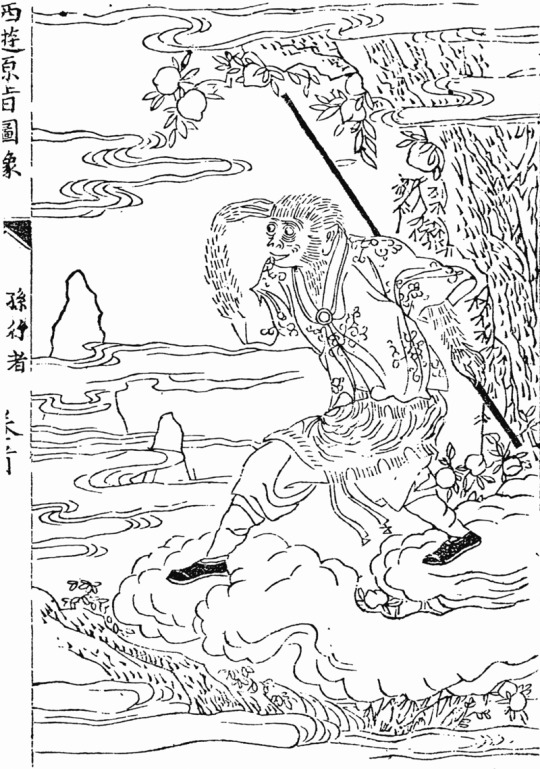
In contrast with the sarugami, I do not think Sun Wukong, one of the protagonists of the classic Chinese novel Journey to the West, needs much of an introduction. We reached the point where even in the west he is recognizable enough to warrant toys based on him (there’s a Lego Wukong on my desk right now). Biten's design has many callbacks to traditional portrayals of Wukong, including the staff (which in the novel is a pillar stolen from the undersea palace of a dragon emperor) and a very distinctive diadem (in the novel making it possible to pressure the unruly Wukong into obeying the monk he is meant to protect).
As a curiosity it’s worth noting that “fake Wukong” is not a brand new idea - in the novel itself, one of the enemies of the heroes, Six-Eared Macaque, actually impersonates him for a time.
Wukong is effectively himself a “divine monkey”, seeing as despite his origin as a literary character he actually came to be worshiped as a deity in mainland China, Taiwan and various areas with a large Chinese diaspora. The topic of Wukong worship itself came to be an inspiration for literature, starting with the excellent The Great Sage, Heaven’s Equal by Pu Songling, a writer active during the reign of the Qing dynasty, in the early eighteenth century.
2. Enoko Mitsugashira - “immortal yamainu” + Cerberus
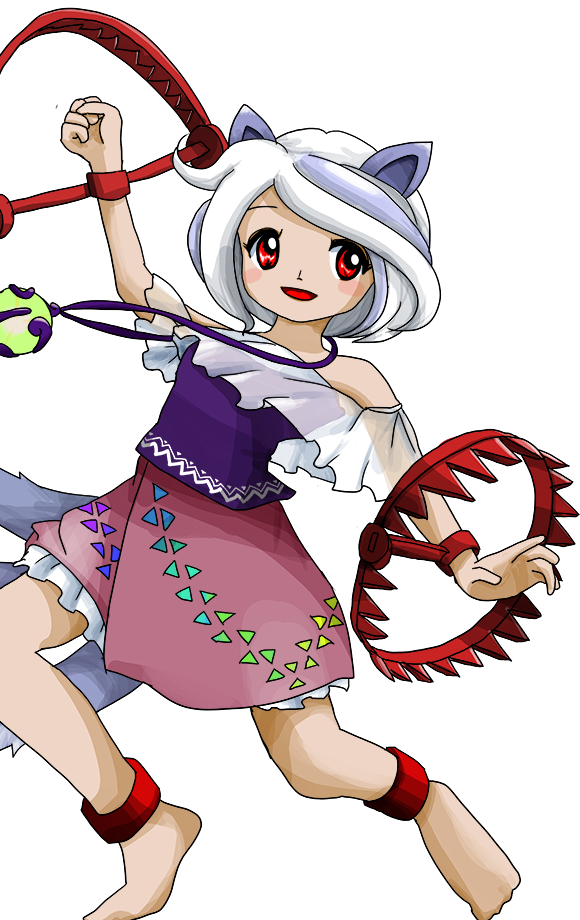
Enoko gets the least coverage here, because there really isn’t much to say. Yamainu, “mountain dog”, isn’t really a supernatural creature, it’s an old term for either the extinct Japanese wolf, a type of feral dog, or a hybrid between these. It can also be used as a synonym of okuri-inu, a youkai wolf believed to accompany travelers at night.

There’s actually a distinctly Journey to the West-esque component to Enoko’s backstory, but I have no clue if this is intentional. In the aforementioned novel, many of the antagonists, who are generally demonic animals, are motivated by the desire to devour the flesh of the protagonist, the Buddhist monk Tang Sanzang, because it is said to grant immortality. Granted, given the obscurity of the figure Zanmu is based on - more on that later - perhaps this is an allusion to something else we have yet to uncover.
Cerberus, being probably one of the most famous mythical monsters in the world, does not really need to be discussed here. The illustration is included mostly because I like Edmund Dulac and any opportunity is suitable for sharing his illustrations. I do not think it needs to be pointed out that Enoko's bear trap weapons are meant to evoke Cerberus' extra heads.
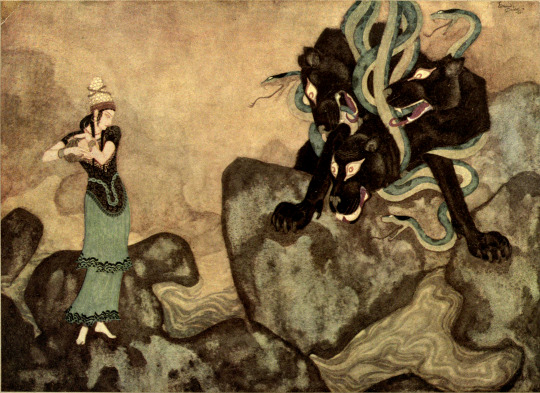
3. Chiyari Tenkajin - tenkaijin (+ mujina) + chupacabra

While my favorite animal youkai not yet featured in Touhou is easily the kawauso (otter), I was very pleased to learn we sort of got a mujina since I wanted to cover this topic since forever, but never got much of a chance. Technically Chiyari is actually meant to be a tenkaijin, which is not a mujina but a slightly different youkai (a will-o-wisp or St. Elmo’s fire-like creature, specifically) who in the single tale dealing with it takes the form of a mujina after dying, but as there is not much to say about it beyond that you will get a crash course in mujina folklore instead.

Today the word mujina is pretty firmly a synonym of anaguma - in other words, the Japanese badger. The animal does not substantially differ from other badgers, so I do not think much needs to be said about its ecology. However, historically the term could be used to refer to the tanuki regionally, or interchangeably to both animals, so in some cases if insufficient detail is provided it is hard to tell which one is meant.
This ambiguity extends to the folklore surrounding them, and generally if you know what to expect from tanuki tales, which I’m sure most people reading this do, you will instantly recognize many of the plot elements typical for mujina ones. In other words, it is yet another yokai which typically takes the role of a shapeshifting trickster. Some supernatural phenomena could be basically interchangeably attributed to mujina, tanuki, kitsune or kawauso. Mujina are commonly described taking the form of Buddhist monks, which is one of the many similarities between them and tanuki.

The most famous depiction of a shapeshifting mujina comes from Toriyama Sekien’s Konjaku Gazu Zoku Hyakki (The Illustrated One Hundred Demons from the Present and the Past). The accompanying text compares the creature to the supernatural versions of kitsune and tanuki, and states that the artist relied on a tale according to which a mujina was able to successfully impersonate a Buddhist monk until accidentally revealing its tail.
What makes the mujina special is that it is actually the oldest recorded example of a youkai of this sort. A mujina tale already appears in the early Japanese chronicle Nihon Shoki, dated to 627. It reports an incident of a mujina transforming into a human and singing somewhere in the Michinoku Province. I feel like this alone is a good example of why you should be wary of people who seek to present Nihon Shoki or Kojiki as historical truth.
Western audiences as far as I know were first introduced to mujina by Lafcadio Hearn. To my best knowledge, the fabulous shapeshifting badgers however failed to gain the popcultural recognition enjoyed by tanuki and kitsune. They did appear in Shigeru Mizuki's stories every now and then, and I found a mascot character based on them, but overall there isn't all that much beyond that.
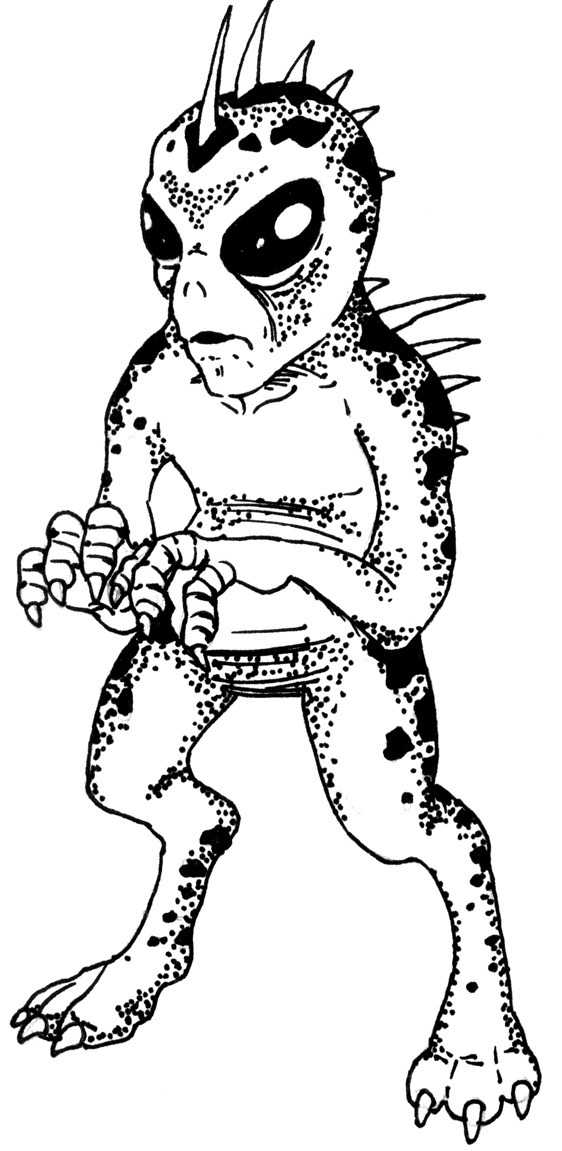
Naturally, there isn't much mujina in Chiyari's design, and she instead most likely owes her distinctly spiky appearance to the other inspiration behind her character, the chupacabra. Mujina are not really portrayed as bloodthirsty, but the poorly documented tenkajin apparently is, which is presumably why ZUN decided to connect Chiyari with the chupacabra, the best known modern blood-drinking creature, who first appeared in tall tales from 1995 and subsequently took popculture by storm after spreading from Puerto Rico to mainland USA and Mexico. I am not a chupacabra aficionado so I have little to offer here, sadly.
4. Hisami Yomotsu - yomotsu-shikome
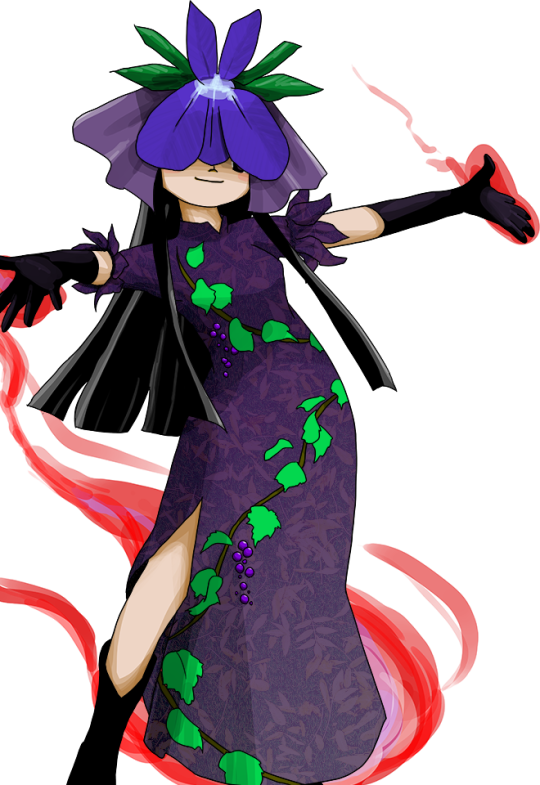
Judging from what I’ve seen on social media and on pixiv, Hisami is shaping up to be one of the most popular new characters (she’s my fave too). In sharp contrast with that, her basis is pretty obscure. So obscure that there isn’t even any historical art to showcase, as far as I can tell (note that this blog claims night parade scrolls might have something to offer, though - I was unable to verify this claim for now, sadly). As we learn from her bio, she is supposed to be a yomotsu-shikome. They’re called the “hags of Yomi” of Yomi in Donald L. Philippi’s Kojiki translation. The term shikome can be literally translated as “ugly woman”. Nothing about them really implies femme fatale leanings we are evidently seeing in Touhou but I’m not going to complain about that.
Yomotsu-shikome appear only in the Kojiki and the Nihon Shoki, and in both of these early chronicles they are portrayed as servants of Izanami after she died and came to reside in Yomi, the land of the dead. Nihon Shoki states there are only eight of them.
The distinct grape vine motif present on Hisami’s clothes seems like an obvious reference to Izanagi’s escape from Yomi following his meeting with Izanami, portrayed in the myth recorded in both of these sources. When the yomotsu-shikome started to pursue him, he threw a vine he used to hold his hair at them. The plant instantly bore fruit, which the entities started to eat. They later resumed the chase, but were once again held back, this time by a bamboo shot. According to the Nihon Shoki, they eventually give up after he creates a river from his piss (sic) to keep them away.

Yomotsu-shikome are sometimes compared to oni by modern researchers. Noriko T. Reider in her monograph about oni argues that alongside hashihime and yamanba (pictured above) they can be effectively grouped with them. Another researcher, Michael D. Foster, is more cautious, and states that despite clear similarities it’s best to avoid conflating oni-like female demons with female oni proper, especially since the latter have a distinct iconography and a distinct set of traits. Norinaga Motoori, the founder of kokugaku or “national learning”, a nationalist intellectual movement in Edo and Meiji period Japan, claimed that oni were based on yomotsu-shikome, which is a pretty dubious claim. It is ultimately not certain when the term oni started to be used, but it is safe to say it has continental origin. And, of course, oni permeate Japanese culture in a way yomotsu-shikome do not.
5. Zanmu Nippaku - Zanmu
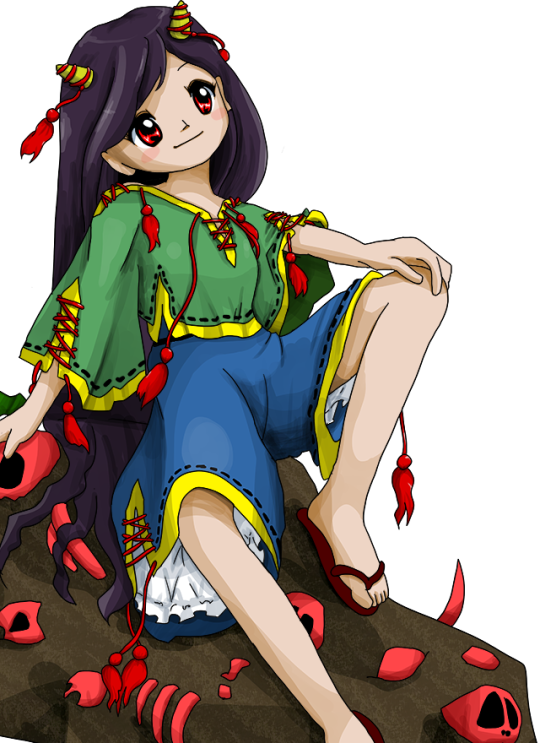
This was the toughest mystery to solve, and I am fully indebted to 9 here, since they figured it out, I am merely depending on what they directed me to. Research is still ongoing, and it feels like we just started to untangle this mystery, so you can safely expect further updates.
Zanmu appears to be based on the Buddhist monk… well, Zanmu. You can learn a bit about him here or on Japanese wikipedia; it seems there are quite literally 0 sources pertaining to him in English, and even in Japanese there is actually very little. Their names are not written the same, ZUN swapped the sign for “dream” from the original name for one which can be read as “nothingness”. If the unsourced quote on wikipedia is genuine, the reason might be tied to the personal views of the irl Zanmu. What little we’ve been able to gather about him is that he was active in the Sengoku period, and apparently was regarded as unorthodox and eccentric. This lines up with Zanmu’s omake bio pretty well. Seems the real Zanmu was also unusually long lived, and was able to recall events from distant past in great detail, though obviously the figure of 139 years attributed to him in a few places online has to be an exaggeration.
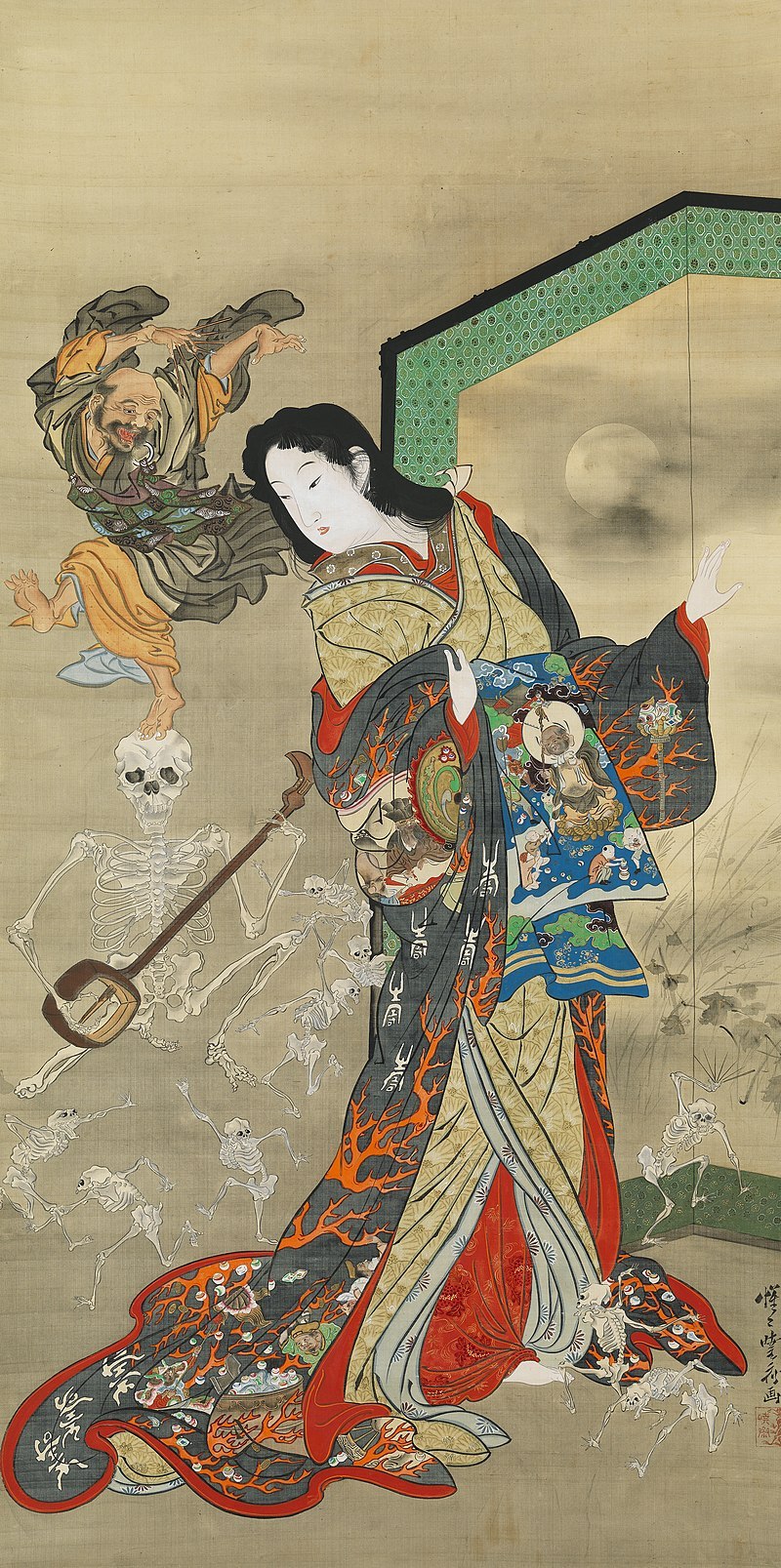
Yet more puzzling is the reference to Zanmu’s familiarity with Ikkyo you might spot in the linked article. Whether the famous Ikkyo who you may know from the tale of Jigoku Dayu is meant is difficult to determine. The chronology does not really add up; on the other hand the logic behind associating one eccentric semi-legendary monk with another in later legends isn’t particularly convoluted. As 9 pointed out to me, if ZUN was aware of this link, and the same Ikkyo really was meant, it is not impossible the connection between Zanmu and Hisami is meant to in some way mirror that between Ikkyo and Jigoku Dayu.
As you can easily notice, it’s pretty clear the historical Zanmu was male. It does not seem his Touhou counterpart is, obviously. I would say we should wait for more info until declaring that we have a second Miko situation on our hands, with a male historical figure directly reimagined as a female character without any indication we are dealing with a relative rather than the real deal. There’s still relatively little info to go by so I would remain cautious (though naturally this is not meant to discourage you from having headcanons).
Neither me nor 9 were able to find any connection between the historical Zanmu and oni… so far, at least. Therefore, what motivated ZUN to make Zanmu an oni remains to be discovered.
As a final curiosity, on a semi-related note it might be worth pointing out that while not as common as their male peers, female oni are not a modern invention, and already appear in setsuwa from the 13th century. A particularly common motif are tales describing a woman turning into oni due to jealousy or anger.
Further reading:
Jason Colavito, The Secret Prehistory of El Chupacabra (2011)
Bernard Faure, Gods of Medieval Japan vol. 1-3 (2015-2022)
Michael Daniel Foster, The Book of Yokai. Mysterious Creatures of Japanese Folklore (2015)
John Knight, Waiting for Wolves in Japan. An Anthropological Study of People-wildlife Relations (2003)
Noriko T. Reider, Japanese Demon Lore (2010)
272 notes
·
View notes
Photo

“When the bitterest fighting in the Shanhaikwan conflict occurred— the great south gate of the city - with Japanese troops swarming over it shortly after the Japanese occupation. It was it the south gate that the most stubborn Chinese resistance was made and where both armies suffered their heaviest casualties.”
- from the Kingston Whig-Standard. February 3, 1933. Page 11.
#shanhaiguan#operation nekka#invasion of manchuria#manchurian incident#defense of the great wall#great wall of china#imperial japanese army#imperial japan#japanese aggression in china#sino-japanese war#sino japanese war
4 notes
·
View notes
Text
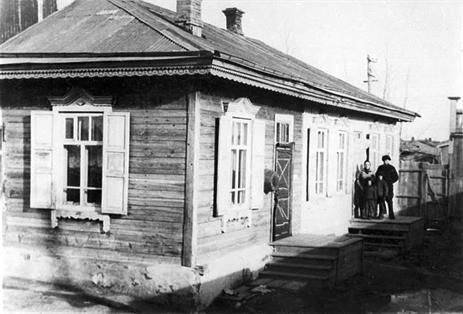
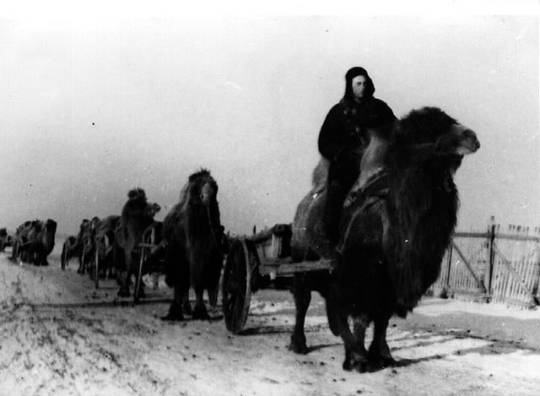
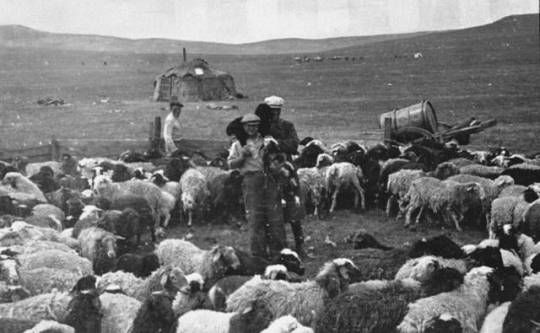


The Litvin family - Jewish farmers from Hailar, Manchuria, Chinese Inner Mongolia region
The Litvin family was originally from Irkutsk, Siberia. Life for Jews became increasingly harder there during WWI, so the family moved to Inner Mongolia where the existence of the Chinese Eastern Railway made the pastoral area promising.
The family patriarch, Simeon Litvin, was a very skilled farmer. He could accurately determine the age of a horse by its teeth and learned to speak the Mongolian and Tungus languages when communicating with Buryat and Tungus people. So when the family settled in the small town of Hailar on the CER, Simeon quickly made himself at home and gained friends among his suppliers, while still observing Jewish holidays, not working on Saturdays and regularly visiting the Hailar synagogue.
The situation changed dramatically when the Japanese occupied Manchuria in the early 1930s and established the puppet state of Manchukuo, after the Soviet Union sold its part of the railroad to the them. Japanese troops and police became increasingly aggressive, attacking, insulting, and even raping private citizens. They ruthlessly beheaded captives without trials and put their heads on public display. Chaim Litvin, the son of Simeon, had to endure brutal torture and years of imprisonment in a labor camp. After the prison was liberated, Chaim hurried home to Harbin, covering 700 kilometers in only three days. There, he began to breed cattle, got married and built a large farm together with his wife. Chaim worked until in 1959, in the People’s Republic of China, everything was confiscated. With the threat of being arrested by the Communist regime, he went with his family to Israel in 1962.
160 notes
·
View notes
Note
are there certain visual themes or imagery you yourself particularly associate with yao as an artist or writer? i'm trying to visualize the nations better...
hmmm, interesting question. i like incorporating nature imagery into the hetalias, especially old nations like yao. there's something mythical and compelling about the sense of age and vastness that evokes. these are some (non-exhaustive) thoughts i've had:
a. i always associate yao with rivers and water; the Yellow River in particular, which is often seen as the "cradle" of Chinese civilisation (but of course, there's also the Yangtze, and the Pearl River too). rivers are life-giving but also untameable, powerful and dangerous—the Yellow River's fertile silt birthed agriculture and civilisation, but its destructive floods have claimed uncounted lives over the millennia of Chinese history. and...that's kind of how yao is, as a nation and an empire, towards others of their kind. the source of cultural and artistic innovations, but also death. water can be fluid, life-giving and nurturing, but also as treacherous as a torrential flood sweeping everything away, no?
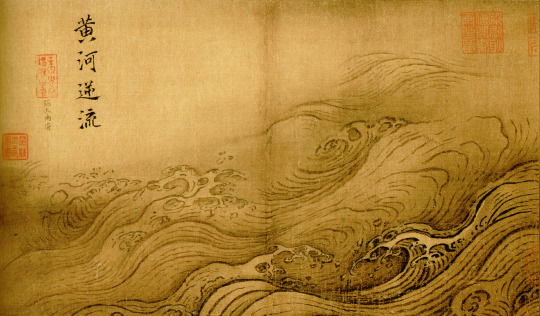
like the Yellow River's relationship with humanity, yao's impact on world history feels to me like this duality of life and death; peace and warfare; mentor, empire, conqueror... it's like, yao's been a teacher to many others but...i don't think their predominant image of him is as a warm and nurturing figure. maybe more so with his own people, but less so with other nations. being the old warlord he is, he'd say certain things very matter-of-factly (especially to yong-soo and kiku), about how power is the only language their kind universally understands, or about history being written by the victors (when we consider how the only surviving written sources about certain periods of asian history are only chinese ones...), inasmuch he'd talk about the importance of confucian virtue, integrity and humility on other occasions.

b. for obvious reasons; dragons—they and rivers both have that overlapping association of being serpentine, powerful and untameable. in contrast to how european dragons often took on villainous roles and were harbingers of disaster, it's important to note chinese dragons usually have far more positive cultural connotations. they symbolise prosperity, fortune and are guardians; often associated with power over water (so again; Yao and rivers and water.) many dragons are associated with a particular river or sea. they're also believed to have powers over the weather and were often prayed to. after all, the capriciousness of the rains ruled people's lives so much through natural disasters or made a difference between a bountiful harvest and a famine. so, i think at various points in history his people might also have understood him as a literal dragon (spirit/deity) walking around in a human guise. dragons are also a visual staple of chinese culture, from statues to jewellery. at the same time: while they're auspicious symbols—dragons can of course have aggressive and far less benign connotations if we consider how they became symbols of the emperor—and thus chinese imperial power and dominion over others. he evokes majesty, but also dread from that perspective.
c. plum blossoms: much like the sakura in japanese culture, plum blossoms are one beloved motif you'll see showing up in chinese art and literature throughout history. they're elegant and ethereal, also a symbol of both transience and renewal in a way, i'd say—their blossoms wither and die, but they come back each year. there's also that saying about how without a bitter cold, you won't have the sweet fragrance of plum blossoms, because they start blooming in winter. that's...very yao to me. china, as an idea, makes me think of a lot of elegant and refined traditional culture (like poetry or paintings) which plum blossoms recall—but i also think of humbler themes—the simpler idea of someone and something who is enduring, adaptable and resilient. who endures the harshest weather time and time again until spring arrives, the way my (peasant) ancestors probably did, carving their way through all the hardships of chinese history. yao might appear refined in an indulgent, wealthy way when he's dressed in his finest silk hanfu or a smart western suit in the modern day—but if you shake his hand, his palms are always callused and you can just see the weight (and hard-won experience) of centuries in his gaze.
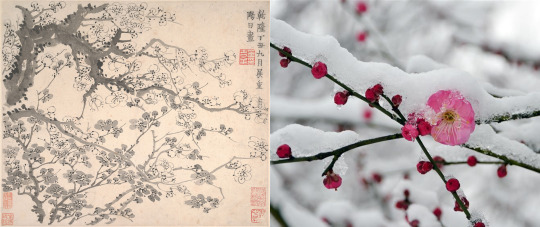
99 notes
·
View notes
Text
Klingons & Racialisation - the Long Post
This post is an overview of the racial coding of the Klingons from their first appearance to the present day, illustrated by quotes from Trek writers, actors and crew members taken from the Memory Alpha article Depicting Klingons, with my own interjected summaries and explanations. It is by no means comprehensive (I likely missed some stuff), and does not offer critical analysis of the quotes provided, but nonetheless is intended to demonstrate irreproachably the open fact that Klingons have always been intentionally written and designed as non-white -- something that fandom consistently fails to take into account when perpetuating racist stereotypes and reiterating racist canon content. I recommend reading the whole article for a more in-depth understanding of the subject, as well as seeking out the existing writing of fans of colour. This post is primarily for reference purposes so I've tried to limit my own analysis and opinions, but I do post those in my Klingon tag as well as more general headcanons and worldbuilding and I'm happy to answer any (good faith) questions this post may raise.
As always, if I have overstepped in any way as a white fan in making this post, I am grateful to be informed and will make any required changes.
Content warning for outdated and offensive language under the cut.
The Original Series
"There is some suggestion that the Klingons represent a Cold Warrior's view of China in the 1960s – swarthy, brutally repressive." (Star Trek Magazine issue 153, p. 66)
"And I think he was basing a lot of it on the kind of attitude of the Japanese in World War II...." ("Errand of Mercy" Starfleet Access, TOS Season 1 Blu-ray)
The script of "Errand of Mercy" introduces the Klingon look by saying, "We see the Klingons are Orientals,"
"Spray my hair black, give me a kind of swamp creature green olivey mud reptilian make-up, and we'll borrow some stuff from Fu Manchu, and put a long moustache and eyebrows on me." ("The Sword of Colicos", Star Trek: Deep Space Nine - The Official Poster Magazine, No. 8)
"I think the makeup was called 'Mexican #1 or #2.' That was the name of the original makeup foundation – they actually had kind of racist names at the time, like 'Negro #1' and 'Mexican #2' – which was the basis for the original Star Trek makeups." (Star Trek Magazine issue 172, p. 59)
"In the original series, all they wore was a dark face and their black hair," Michael Westmore observed. ("Michael Westmore's Aliens: Season Two", DS9 Season 2 DVD special features)
The Klingons' appearance changed within the original Star Trek series; although dark makeup and heavy eyebrows were the norm, the Klingons of "The Trouble with Tribbles" were much lighter-skinned and more Human-like in appearance.... He noticed that they are not only less like Mongol warriors by having less of a swarthy appearance but also by being slightly not as fierce... ("The Trouble with Tribbles" Starfleet Access, TOS Season 2 Blu-ray)
"...they were meant to represent the Communist foes of the United States specifically during the Vietnam War, which was being controversially fought at that time. (Star Trek: The Original Series 365, p. 222)
"...let us never set up a situation whereby those adversaries of ours [Klingons] give any indication of ever being anything but highly aggressive and self-seeking opponents." (These Are the Voyages: TOS Season Three)
Here it is explicitly stated that the Klingons were based on various Asian cultures, with the USSR also being mentioned heavily in the article. This influence and the use of "yellowface" is covered more comprehensively in this youtube video Klingons & The History Of Racial Coding. However, the video has some notable gaps which I hope to cover in this post.
Post-TOS (movies)
The Star Trek III portrayal of Klingons took inspiration from Japanese history. "Harve [Bennett] had the notion that the Klingons were like Samurai warriors," explained linguist Marc Okrand. (Star Trek: Communicator issue 114, p. 27) Robert Fletcher agreed with Bennett, later saying of the Klingons, "I always liked to think of them as authoritarian, almost feudal, like Japan had been." (The Making of the Trek Films, UK 3rd ed., p. 52)
Regarding the make-up, Michael Westmore observed, "Until now, Klingons were brown. Some had a bony ridge running down the middle of their foreheads, long black wigs and facial hair." (Star Trek: The Next Generation Makeup FX Journal, p. 28)
"I thought it was an ideal way for us to have our closure too, because the Klingons for us have always been the Communist Block, the Evil Empire. It just made sense to do that story." (The Making of the Trek Films, UK 3rd ed., p. 100)
"Gene was really bothered by the Klingons in VI [....] [They] were, in his words, 'too civilized, too decent, too much of the good guys in the story.' [....] [The Klingon detente] was not the way Gene would have handled it. He would have reversed it, he would have had the Klingons being the ones who couldn't handle the peace, with the Federation saying, 'Come on, let's try and work this out.'" (Star Trek Movie Memories, hardback ed., p. 289)
"The story never explored the Klingon culture the way I'd hoped it would [....] I was hoping for greater insight into the Klingons." (I Am Spock) Nimoy hoped, in specific, that the movie would provide some important insight into why the Klingons had "always been so angry, such nasty, vicious murderers." Nimoy wanted the insightful knowledge to be an intellectually transformational force, changing the thinking of Kirk and the audience. (Star Trek Movie Memories, hardback ed., pp. 287-288)
In an interview in the DS9 Season 7 DVD, Robert O'Reilly observed that a long-running joke among actors who have played Klingons is that they do not want to appear in the Star Trek films as, he believes, the only purpose of a Klingon in one of the films was to be killed off.
Although these last three quotes may not seem relevant, I believe they highlight an important facet of the racialisation of the Klingons. It reads as though Gene Roddenberry was against depicting the Klingons in a more sympathetic light than the Federation, and considering that the Klingons are intended to be non-white, refusing to give depth or motive to their anger in favour of keeping them "nasty, vicious murderers" comes across as fairly racist, especially when these kind of reductive and harmful stereotypes could've been challenged as Nimoy suggests. The treatment of Klingons as disposable villains is also concerning in this context.
The Next Generation
African-American actors were often cast as Klingons in TNG and subsequent Star Trek productions. This practice wasn't racially motivated but was instead carried out because it lessened makeup time, as the performers already had a brown complexion without having to have their skin painted that color. (Stardate Revisited: The Origin of Star Trek: TNG, Part 2: Launch, TNG Season 1 Blu-ray)
Tony Todd, who portrayed the recurring Klingon character Kurn, stated, "I don't look at the Klingons necessarily as African-Americans, but it's about tapping into something–they're certainly an alienated people, so maybe that's why African-American actors can identify with those characters. But that doesn't mean it's exclusive to them." (Star Trek: Communicator issue 116, p. 54)
Michael Westmore actually changed the Klingon facial design in numerous ways, though. He stated, "I added a Shakespearean style of facial hair and a forehead bone structure based on dinosaur vertebrae and I was able to modify motion picture Klingons for television." (Star Trek: Aliens & Artifacts, p. 59)
In "A Matter Of Honor", the Klingons were intended to be used to shed some light on a common social problem prevalent at the time of the episode's making. This was, namely, what it was like to be the only person of either white or black skin coloration while surrounded by people of the other color. The Klingons were selected to illustrate this theme as a spin on the usual arrangement of a predominantly Human crew serving aboard the Enterprise-D alongside Worf. (Captains' Logs: The Unauthorized Complete Trek Voyages, p. 176)
Two historical societies, the Samurai and Vikings, served as other inspirations, Moore perceiving about Klingon culture, "There was the calm, elegant reserve associated with the Samurai but there was the 'party-down' like the Vikings." (Star Trek: Communicator issue 114, p. 58)
"I stopped thinking of the Klingons as the Cold War adversary," he explained. "I didn't think it fit [....] The place where the Russians were when I was doing the Klingon shows just wasn't as relevant any more." (Star Trek: The Magazine Volume 1, Issue 19, pp. 64-65)
"The Klingons are not evil, tyrannical pirates bent only on pillage and plunder. They have a strict, almost unyielding code of ethics and honor and take their responsibilities as rulers seriously." Following a description of the Klingon homeworld, the memo continued by saying, "Klingon society could most closely be compared to that of Sparta or feudal Japan." ("Sins of the Father" audio commentary, TNG Season 3 Blu-ray)
Having recently seen the film Malcolm X, he imagined the Klingons in the "Birthright" duology as metaphors for black people. (Captains' Logs: The Unauthorized Complete Trek Voyages, p. 274; Star Trek: Communicator issue 105, p. 16)
"There's a certain way you have to carry yourself. You have to really be able to project the violence and the anger [....] All you have to do is think of the Spartans. They say, 'They'd rather have you come home dead on your shield than come home a coward.' [18]
This is where I feel the video essay previously mentioned falls short -- in the next gen era, Klingons are now explicitly black-coded. While some Asian cultural influences are still cited, they learn more towards the historical and are intermixed with other historical European influences (Spartans, Vikings, Shakespeare) rather than being fueled by contemporary prejudices towards the political enemies of the US as they were in the TOS era.
Deep Space Nine
Fields also generally based the Klingon group on American Western prototypes from the film The Magnificent Seven or, to a lesser extent, Japanese prototypes from The Magnificent Seven's movie source material, Seven Samurai. (Star Trek: Deep Space Nine Companion (pp. 131-132))
"So, the hair [...] was permed. So, it had more of a curl instead of the straight type look, and by perming it, they were able to kind of give them larger, bigger hair, so it was more like a mane." ("Michael Westmore's Aliens: Season Two", DS9 Season 2 DVD special features)
"I don't know how you could equate Klingons with what's going on in the world today," he admitted. "I think the intention was to make them like samurai. That hairdo they gave them is very much a samurai hairdo. A lot of the fight sequences, the moves with the bat'telh, are very much taken out of the Asian martial arts [....] It's very romantic you know, these three old guys, the Klingon over-the-hill gang." (The Official Star Trek: Deep Space Nine Magazine issue 15, pp. 17-18)
"It was different for them to get into this makeup, because [...] [the makeup was more elaborate and] the beards were bigger, and they were greyer, and they had curls to them, and the moustaches, they had the Fu Manchu look to them. So, they weren't used to sitting that long to be a Klingon." ("Michael Westmore's Aliens: Season Two", DS9 Season 2 DVD special features)
For recreating some old-style Klingons in "Trials and Tribble-ations", the Klingon-playing actors had to be made up with the same swarthy, shiny brown makeup as used in the original series. (The Magic of Tribbles: The Making of Trials and Tribble-ations)
...he had them unite in song, thinking this was "just the kind of thing that Klingons do" because they are, in his opinion, similar to Vikings. (Star Trek: Deep Space Nine Companion (p. 449))
"I always saw the Klingons as a combination of Japanese Samurai who haven't had their morning coffee (or tea!) and African Zulu warriors." [25]
In DS9 the only inspirations cited seem to be historical, once again leaning towards feudal Japan and the Vikings. Interestingly although the Klingons here are predominantly dark-skinned, I don't think that J.G. Hertzler, who is white, had his skin significantly darkened to play Martok (at least, not compared to the obvious brown makeup worn by other white actors playing Klingons). Having a white actor play a Klingon without dark makeup could've set a precedent decreasing the use of such practices later on, but no one seems to have picked up on it.
Enterprise
The Klingons of ENT: "Sleeping Dogs" were based on the crew of the Russian submarine Kursk. "For me," said Dekker, "the point was to acknowledge the Klingons as 'people' – to find them in a clear position of distress [....] The idea to 'humanize' their plight was mine, and it wasn't anything I thought about as far as canon. It just seemed right." (Star Trek: The Official Starships Collection, issue 41, pp. 10-12)
In the final draft script of "Affliction", the altered Klingons were initially referred to as "fierce-looking aliens" and were further described thus; "The aliens have a swarthy complexion, and dark facial hair... they could easily be mistaken for Humans. We'll eventually learn these are Klinqons... but their cranial ridges have disappeared."
At this point in time it seems the Klingons had essentially done a 180 from one-dimensional villains to sympathetic fan favourites, while still retaining the skin-darkening aspect of their makeup and "barbaric" characterisation. Although this is not mentioned in the article's section on the Abrams films, the images provided do demonstrate a level of skin darkening for the Klingons' brief appearance in Into Darkness.
The final section of the article is incomplete, meaning I don't have a lot of information for Discovery's redesign of the Klingons. The sources I can find cite ancient civilisations such as the Byzantines as well as Islamic architecture as inspiration for the set design, with a baroque influence on the costumes. I have heard rumours that the crew of Discovery have cited North African cultures as their inspiration for the Klingons but I can't currently find a source for this. Despite the lack of direct quotes, it's visibly clear that the Klingon makeup is still darkening the skin of white actors, although this time also to non-human blue and purple colours, as well as altering certain features in a racialised way. To elaborate: Mary Chieffo, who plays L'Rell on Discovery, is white and has a very thin nose and small lips, but in costume these are broadened in a way that seems imitative of African ethnic features.
As of the making of this post (early August 2023) I haven't seen any of Strange New Worlds, but from some cursory research its latest episode (Subspace Rhapsody) seems to have put a white actor (Bruce Horak) in brown makeup to play a Klingon. I am deeply disappointed that on a television set in 2023 people can still be darkening an actors skin like this without questioning the racial implications of what they're doing.
Thank you for reading to the end of this post. Please feel free to link to it if you found it useful enough to cite in another context. I would like to reiterate that I am white and while this is an issue I care deeply about it is not one I have an emic understanding of, and if anything I've said here is inappropriate I would be very grateful to be made aware.
#ive tried to make this like. really formal to cover the fact that im fuckin Ragin at snw for doing literal fucking brownface in 2023#next up top ten things fans should Fucking Reconsider saying about klingon characters#anyway#i feel like as a white trekkie who's big into klingons there's this insane blindspot when it comes to The Racism#that ive only ever seen fans of colour talk about#so if i have one goal for this post its to try and reduce that blindspot a bit and give people something concrete to point to#when some fuckwits in their notes acting as tho ~theyre aliens so it cant be racist~#tlhIngan#ghItlhpu'wIj
228 notes
·
View notes
Text
China's second page from the Hetalia Collezione

all collezione pages
[Please note, I’m an amateur in Japanese and have to use various resources and translation machines to help me. If you notice a possible mistake or want clarification, please bring it up to me *politely* and not aggressively or hostile.]
#hetalia#aph hetalia#hetalia collezione#aph china#btw hk's line in the left lower panel seems to be missing in the original publishing. ig it was smth hima forgot to add haha#so anyway it's ofc a tl of my own and I worded it as best as could but I can't help but feel shy and insecure whenever I have to make thing#“sound” like a character haha always so embarrassing
121 notes
·
View notes
Note
Hiii, I'm glad the ask box is open!
Idk if you already did a rec list on this, but can you recommend me old bls, like 90/2000s? I watched Seven days movies and its really good
Oh yay! Seven Days is the best. Actually, I have never done this. Here's a list of...
10+ BL's rated 7/10 or higher that aired prior to 2018

Just Friends?
Korea 2009 Gaga
This is Korea's first (kinda) upbeat version of a BL featuring already established boyfriends, one of whom is on military leave, trying to decide on coming out, family life, and the future. All of these are themes Korea will pretty much never tackle again, retreating as they would to their bubble. But what a fun little offering this little show was and is to this day. You should watch it.

Love Sick & Love Sick 2
Thai 2014 YouTube
This is one of those BLs that owes almost nothing to yaoi, although it started a number of tropes that are now endemic to Thai BL. What it is, instead, is a well scripted story of bisexual self-discovery and the inherent chaos of loving someone of the same gender for the first time, all wrapped up in hormones, existing relationships, and communication issues. It is high school queer angst at its messiest. Nothing is going to be easy for these boys because queer isn’t easy but also because life isn’t easy… welcome to adulthood sweethearts.
I'm actually considering a rewatch of these beginning of 2024 in honor of the 10 year anniversary if anyone wants to join.
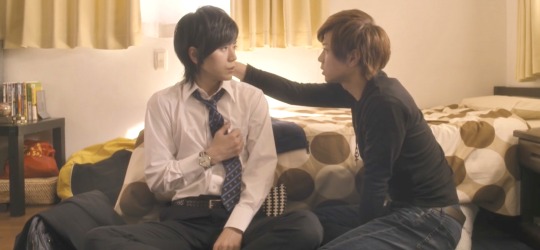
Seven Days
Japan 2015 grey
The asker already mentioned it but still, never doubt my ability to recommend this show. One of the best live action yaois ever made, with perfectly structured angst, fantastic characters and acting, and no problematic tropes (rare in Japanese BL). The leads have excellent chemistry although it’s low heat there’s still some really cute mutual kisses.
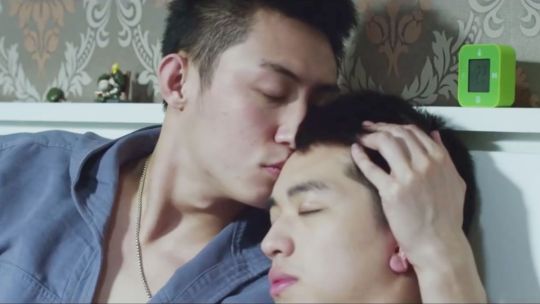
Addicted: Heroin
China 2016 Viki
When Chinese BL was good it was very dirty good and when it was bad it was censored. This is the model for that statement: rich kid falls madly for the genius poor kid in his class, starts an aggressive pursuit, includes kidnapping for love, obsession, stepbrother trope, plus some cheating. I love this BL because of what I could have been. Just stop watching it after The Sex Scene. Okay?
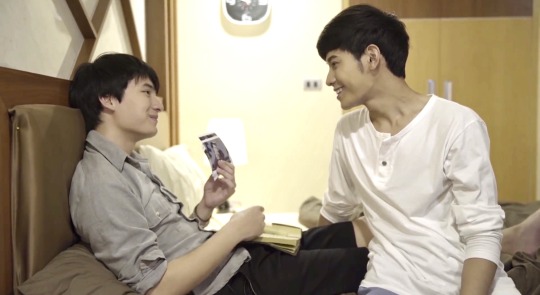
SOTUS & SOTUS S & SOTUS Our Skyy
Thai 2016 YouTube
This is the BL that launched a hundred BLs. No literally, it was SOTUS’s international success that pretty much built the Thai BL industry into the juggernaut it is today. People have baggage around SOTUS, I have nostalgia. Trigger warning on bully hazing. Review and discussion here.
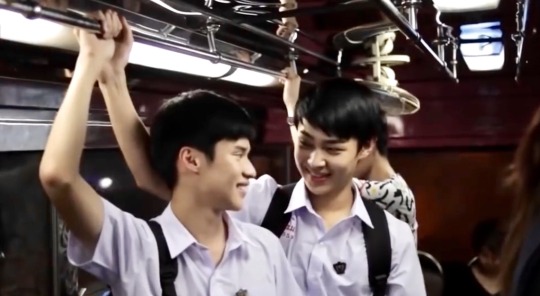
Make it Right 1 & 2 (but not Beach)
Thai 2016 YouTube (Cheewin warning)
What to say about this show, the origin of the Thai BL pulps? It’s objectively terrible, and not just the leads but the side couple too - yet I love it. I tend to call myself the “world’s foremost Make It Right apologist.” I recognize the issues but I find it utterly charming, especially Tee’s utter devotion to Fuse the baby bi disaster.

Long Time No See
Korea 2017 Gaga
Catfishing assassins on either side of a turf war who fall in love not knowing they are on opposite sides. Or do they? Good fight sequences, mature characters, high heat, very suspenseful, AND an HEA. If you like KinnPorsche or Kiseki you will LOVE this one.

HIStory Obsessed
Taiwan 2017 Viki
I weirdly love this but you should know what you are in for: that title. It has a stalking theme meets fated mates and quite a bit of dubious consent. Uke obsessed with seme to the point of losing himself and his identity dies after being rejected, and then has a chance to reboot his life. He decides to save himself by never falling in love. But destiny is a bitch, and this time the seme becomes obsessed with him. This one owes a lot to dark Chinese and Japanese BL, but kind of corrects for the expected sad dead finale by ending happily and playing with a ton of BL tropes. The leads have good chemistry, it's higher heat and the first time Taiwan starts to push that, and VERY DRAMATIC.
Some Others you might consider
Candy and Kiss - Japan 2015
Silhouette of Your Voice (Hidamari ga Kikoeru) - Japan 2017
Red Balloon - Taiwan 2017
(source)
#good BLs before the modern age of BL#early BL recs#old BLs#BLs prior to 2018#recommended BLs#Just Friends?#Korean BL#Love Sick#Thai BL#Seven Days the series#Japanese bl#live action yaoi#Addicted: Heroin#chinese bl#SOTUS#SOTUS S#gmmtv#Make it Right#Long Time No See#HIStory Obsessed#Taiwanese BL
71 notes
·
View notes
Text
But sleep will not come. What is the cause of this cruelty, this stupidity? A million workmen come from Japan to kill or mutilate a million Chinese workmen. Why should the Japanese worker attack his brother worker, who is forced merely to defend himself. Will the Japanese worker benefit by the death of the Chinese? No, how can he gain? Then, in God's name, who will gain? Who is responsible for sending these Japanese workmen on this murderous mission? Who will profit from it? How was it possible to persuade the Japanese workmen to attack the Chinese Workman -- his brother in poverty; his companion in misery?
Is it possible that a few rich men, a small class of men, have persuaded a million men to attack, and attempt to destroy, another million men as poor as they? So that these rich may be richer still? Terrible thought! How did they persuade these poor men to come to China? By telling them the truth? No, they would never have cone if they had known the truth, Did they dare to tell these workmen that the rich only wanted cheaper raw materials, more markets and more profit? No, they told them that this brutal war was "The Destiny of the Race," it was for the "Glory of the Emperor," it was for the "Honour of the State," it was for their "King and Country."
False. False as hell!
The agents of a criminal war of aggression, such as this, must be looked for like the agents of other crimes, such as murder, among those who are likely to benefit from those crimes. Will the 80,000,000 workers of Japan, the poor farmers, the unemployed industrial workers -- will they gain? In the entire history of the wars of aggression, from the conquest of Mexico by Spain, the capture of India by England, the rape of Ethiopia by Italy, have the workers of those "victorious" countries ever been known to benefit? No, these never benefit by such wars. Does the Japanese workman benefit by the natural resources of even his own country, by the gold, the silver, the iron, the coal, the oil? Long ago he ceased to possess that natural wealth. It belongs to the rich, the ruling class. The millions who work those mines live in poverty. So how is he likely to benefit by the armed robbery of the gold, silver, iron, coal and oil from China? Will not the rich owners of the one retain for their own profit the wealth of the other? Have they not always done so?
It would seem inescapable that the militarists and the capitalists of Japan are the only class likely to gain by this mass murder, this authorized madness, this sanctified butchery. That ruling class, the true state, stands accused.
Are wars of aggression, wars for the conquest of colonies, then, just big business? Yes, it would seem so, however much the perpetrators of such national crimes seek to hide their true purpose under banners of high-sounding abstractions and ideals. They make war to capture markets by murder; raw materials by rape. They find it cheaper to steal than to exchange; easier to butcher than to buy. This is the secret of war. This is the secret of all wars. Profit. Business. Profit. Blood money.
Behind all stands that terrible, implacable God of Business and Blood, whose name is Profit. Money, like an insatiable Moloch, demands its interest, its return, and will stop at nothing, not even the murder of millions, to satisfy its greed. Behind the army stand the militarists. Behind the militarists stand finance capital and the capitalist. Brothers in blood; companions in crime.
What do these enemies of the human race look like? Do they wear on their foreheads a sign so that they may be told, shunned and condemned as criminals? No. On the contrary. they are the respectable ones. They are honoured. They call themselves, and are called, gentlemen. What a travesty on the name, Gentlemen! They are the pillars of the state, of the church, of society. They support private and public charity out of the excess of their wealth. they endow institutions. In their private lives they are kind and considerate. they obey the law, their law, the law of property. But there is one sign by which these gentle gunmen can be told. Threaten a reduction on the profit of their money and the beast in them awakes with a snarl. They become ruthless as savages, brutal as madmen, remorseless as executioners. Such men as these must perish if the human race is to continue. There can be no permanent peace in the world while they live. Such an organization of human society as permits them to exist must be abolished.
From "Wounds," by Norman Bethune, a Canadian Communist who died serving the Chinese Communist Revolution
37 notes
·
View notes